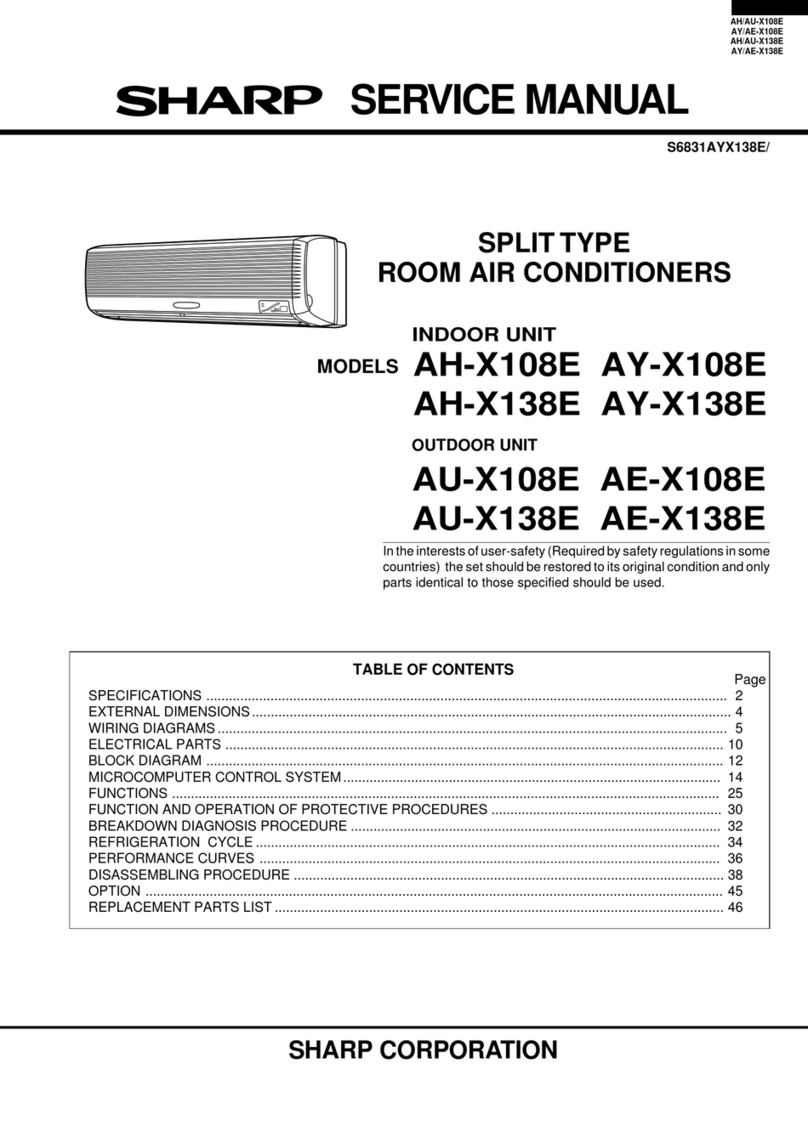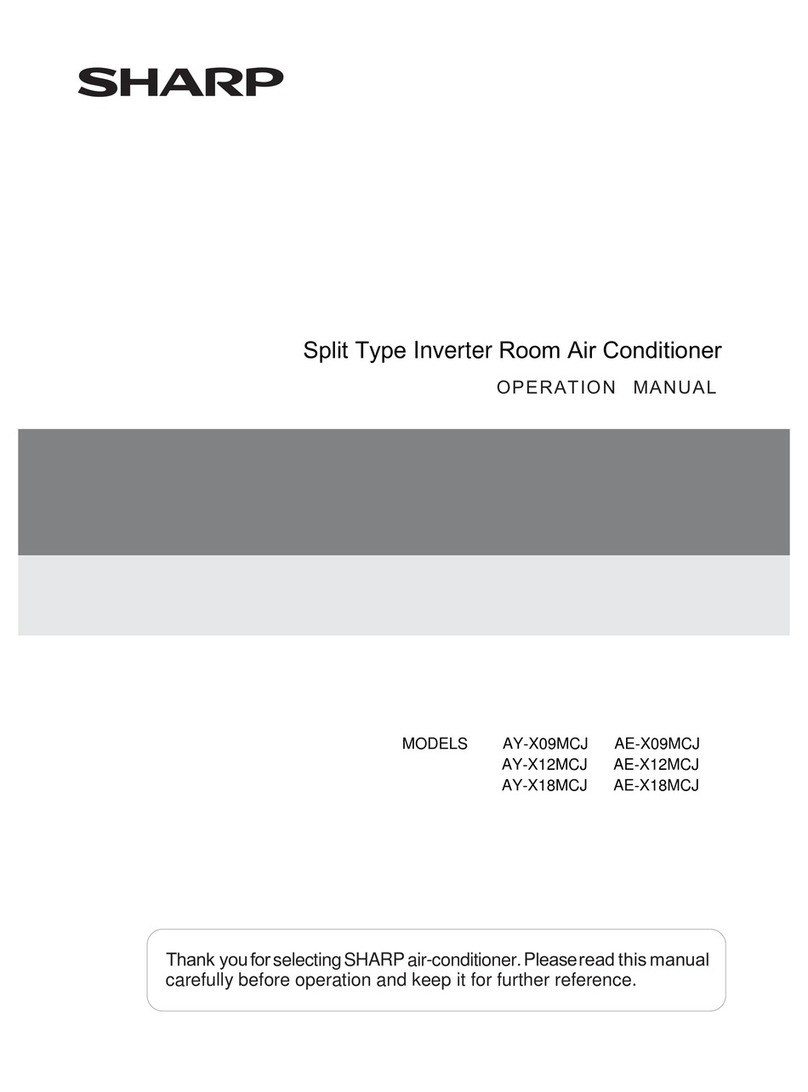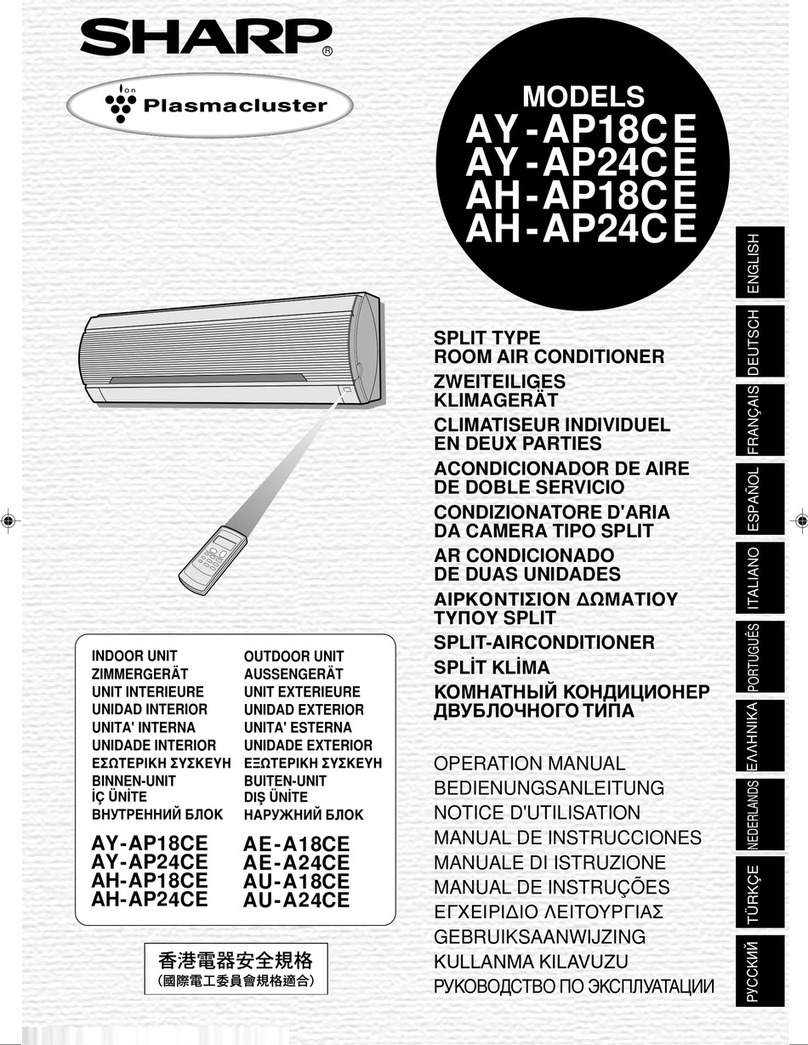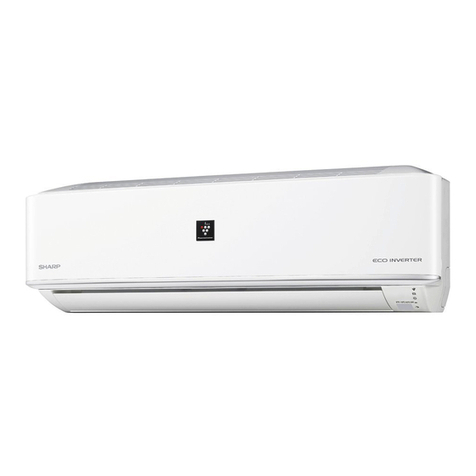Sharp AE-X26FR-N User manual
Other Sharp Air Conditioner manuals

Sharp
Sharp AY-XPM12FR User manual
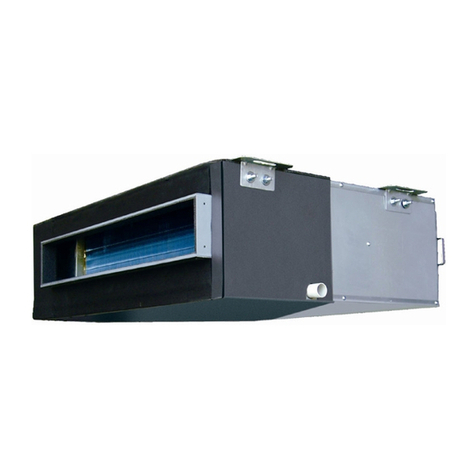
Sharp
Sharp GB-X18JR User manual
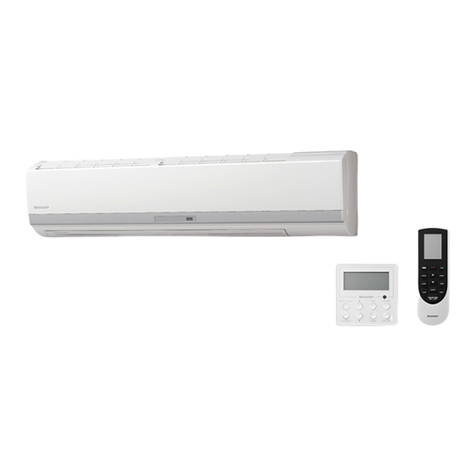
Sharp
Sharp AY-X36RU User manual
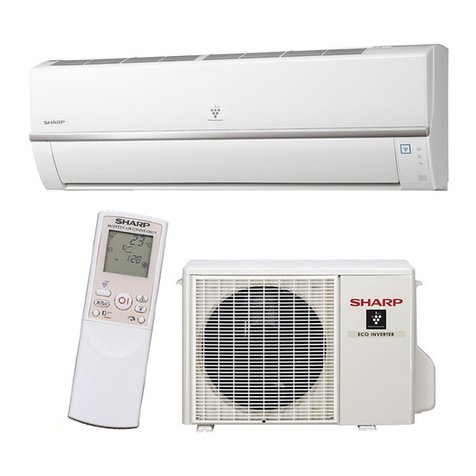
Sharp
Sharp AY-XPC18LR User manual

Sharp
Sharp AH-X08BE User manual
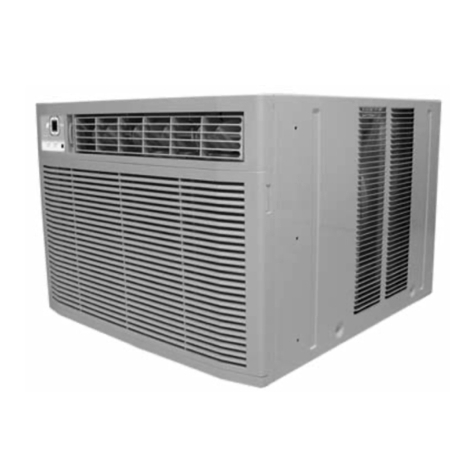
Sharp
Sharp AF-S155NX User manual
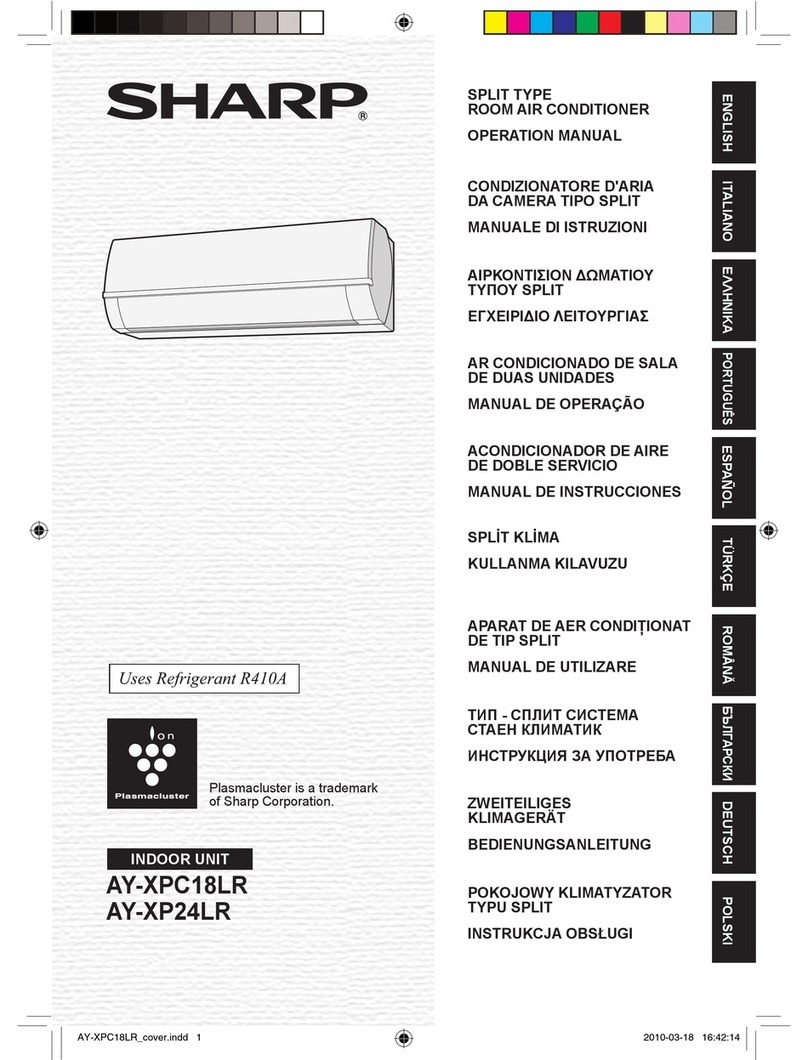
Sharp
Sharp AY-XP24LR User manual
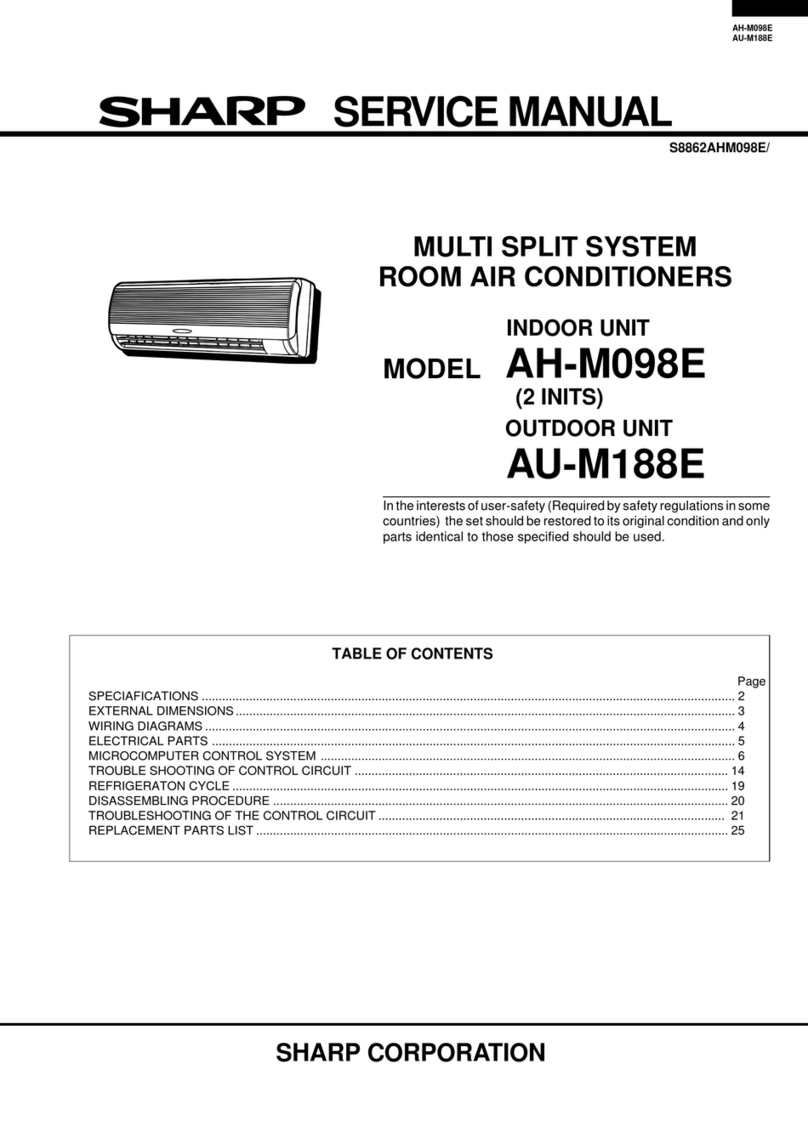
Sharp
Sharp AH-M098E User manual
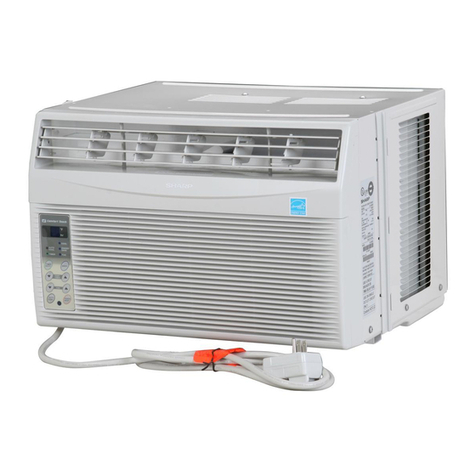
Sharp
Sharp AF-S60PX User manual
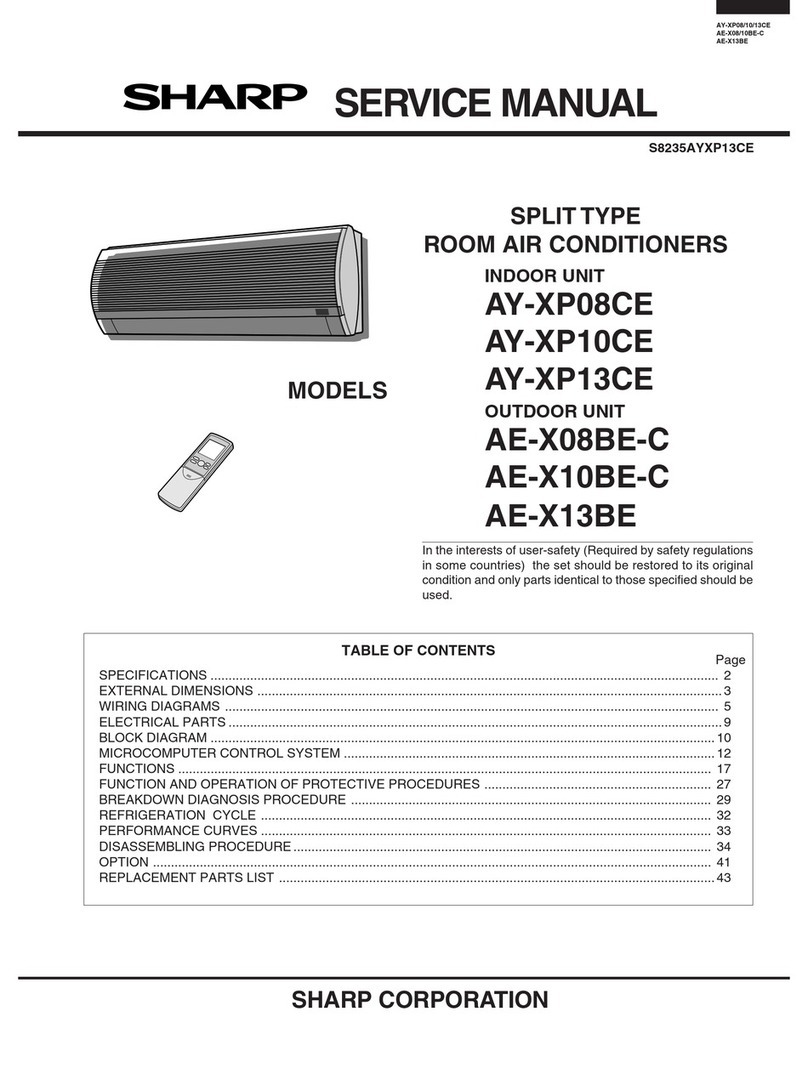
Sharp
Sharp AY-XP08CE User manual
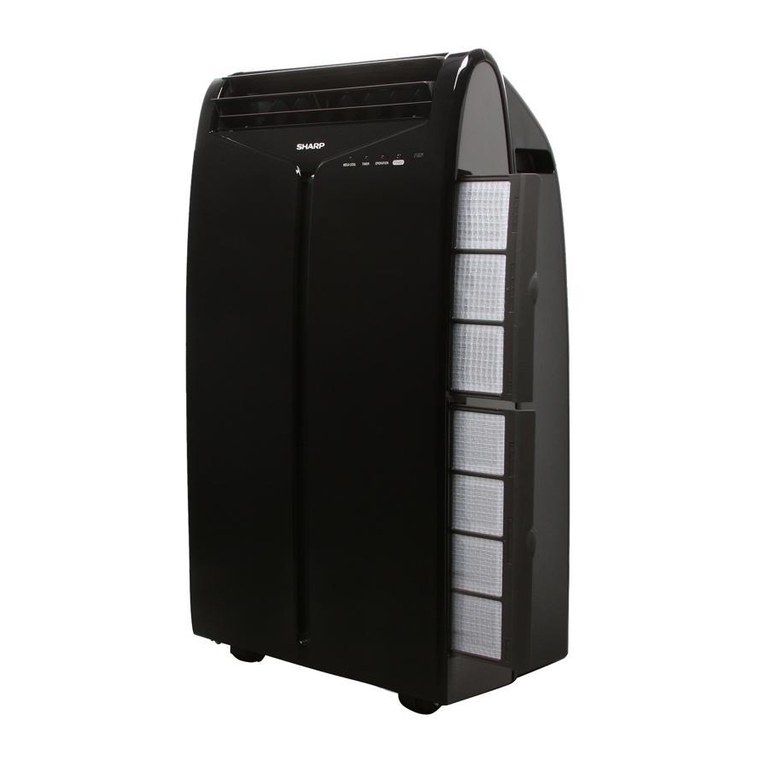
Sharp
Sharp CV10NH - 10,000 BTU Portable Air Conditioner User manual

Sharp
Sharp AE-X2M20RU User manual
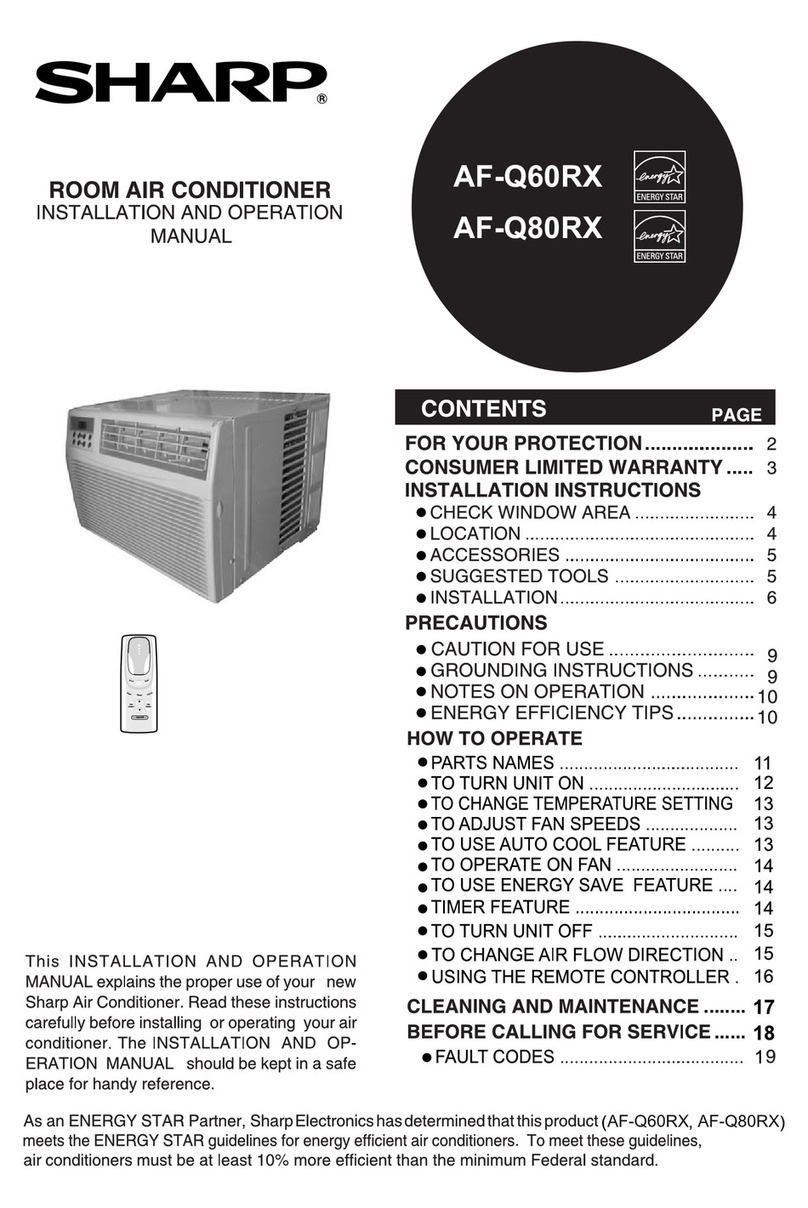
Sharp
Sharp 66129902992 User manual
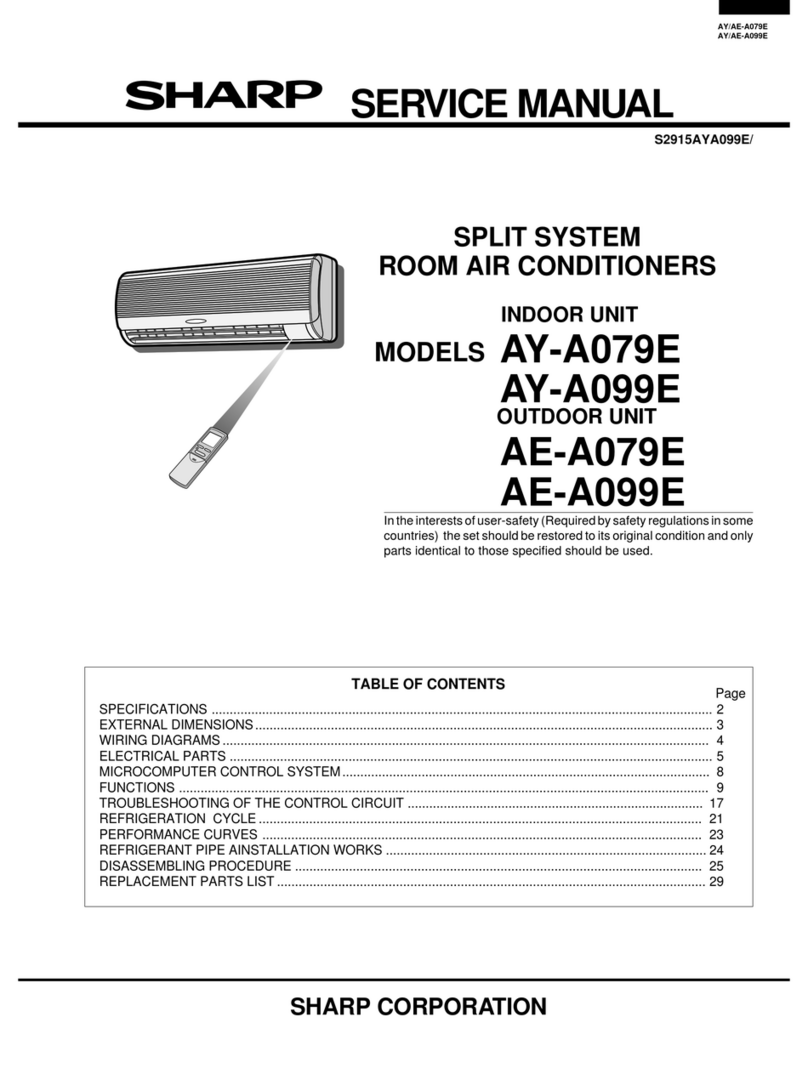
Sharp
Sharp AY-A079E User manual
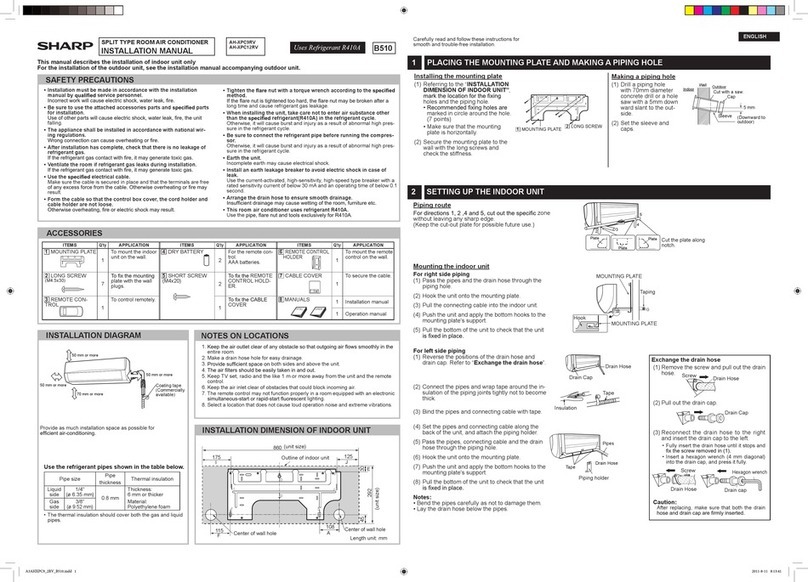
Sharp
Sharp AH-XPC9RV User manual
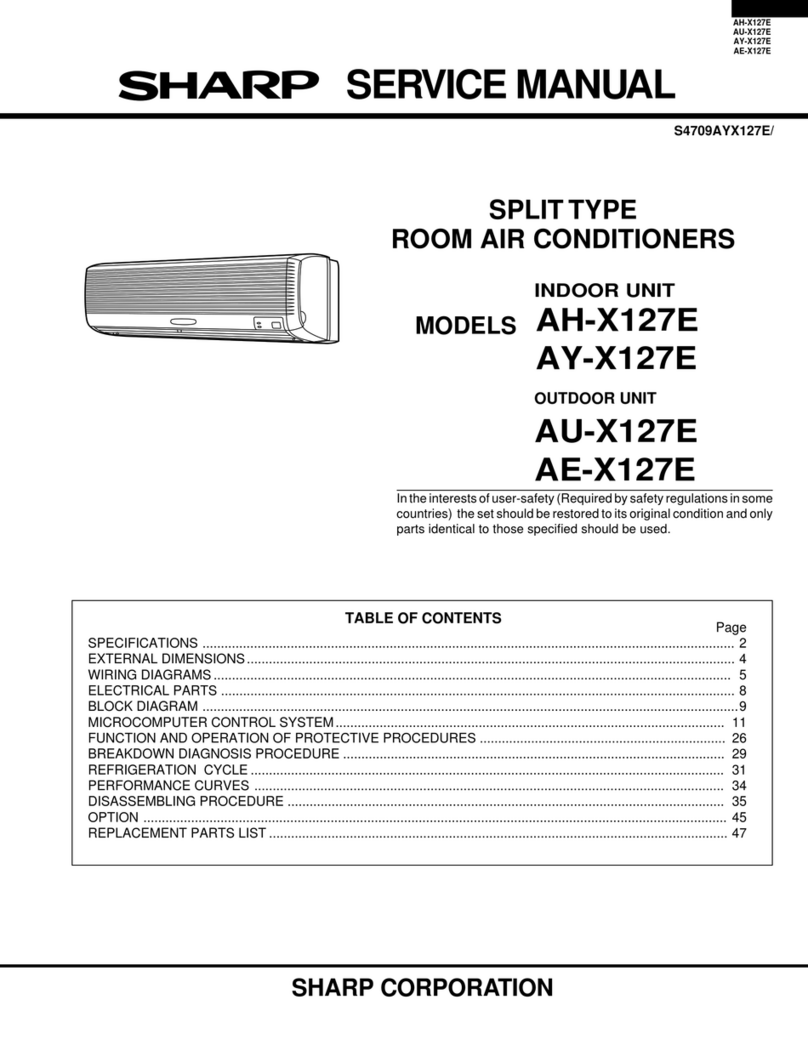
Sharp
Sharp AH-X127E User manual

Sharp
Sharp AE-X4M30PU User manual
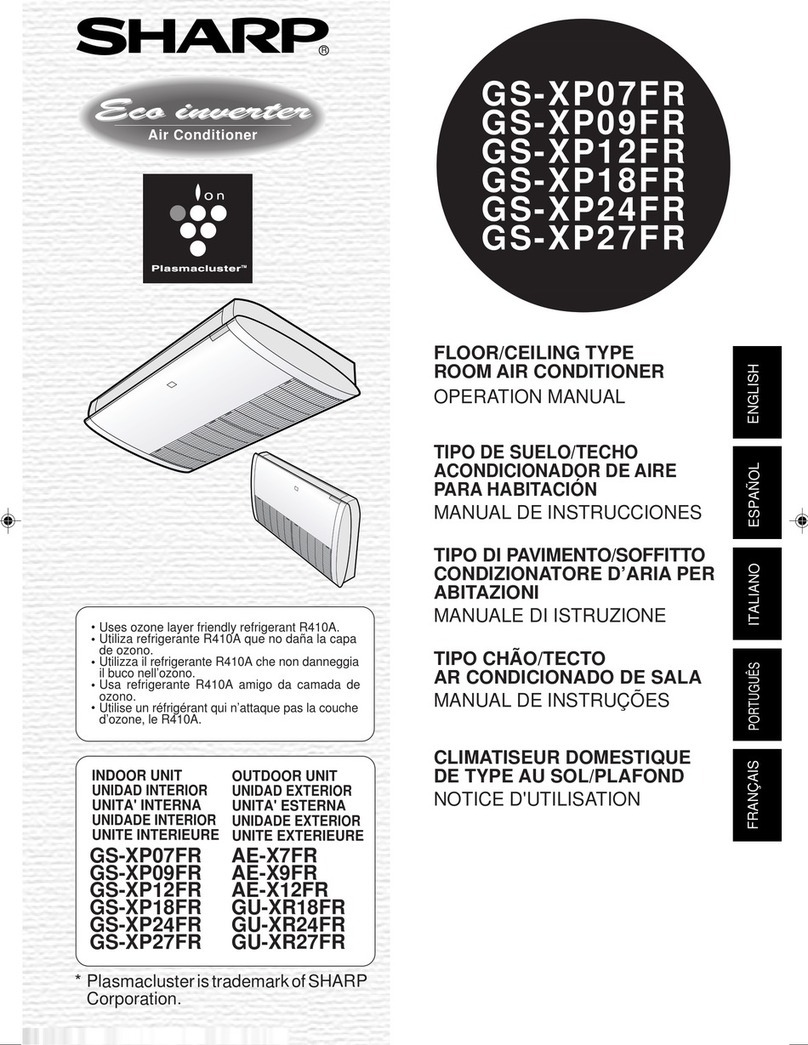
Sharp
Sharp Plasmacluster GS-XP07FR User manual
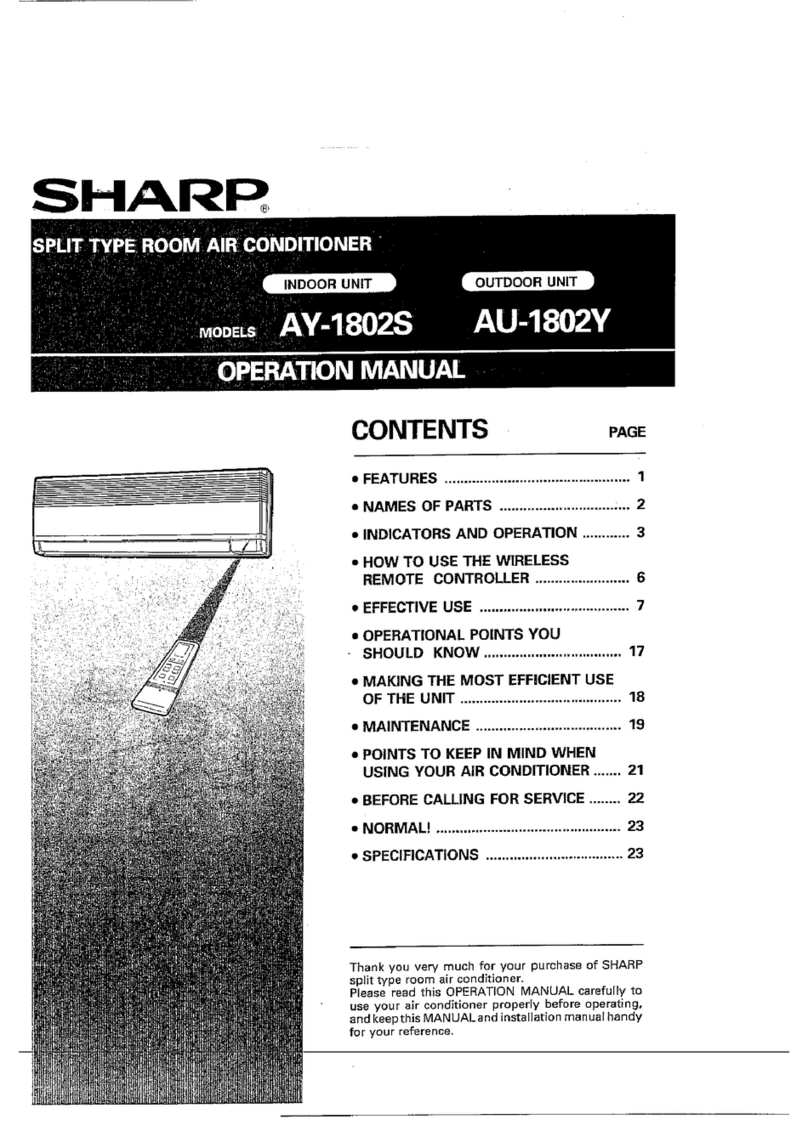
Sharp
Sharp AU-1802Y User manual
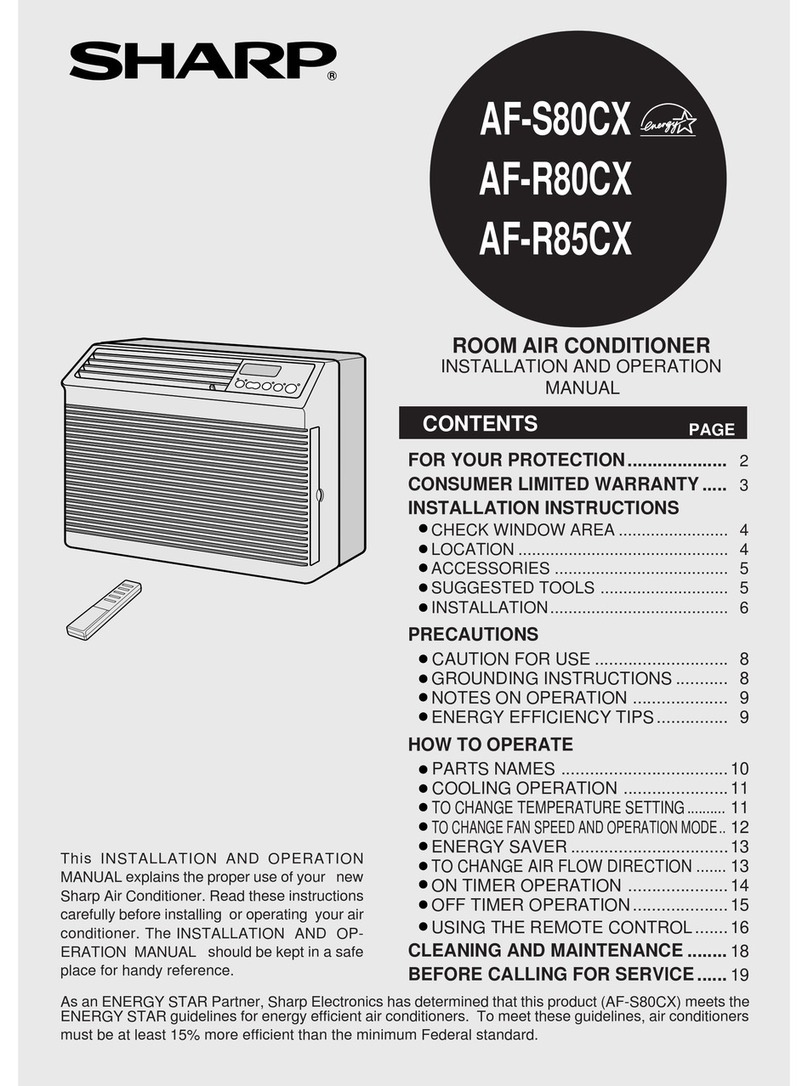
Sharp
Sharp AF-R80CX User manual
Popular Air Conditioner manuals by other brands

Fujitsu
Fujitsu ASYG 09 LLCA installation manual

York
York HVHC 07-12DS Installation & owner's manual

Carrier
Carrier Fan Coil 42B Installation, operation and maintenance manual

intensity
intensity IDUFCI60KC-3 installation manual

Frigidaire
Frigidaire FAC064K7A2 Factory parts catalog

Sanyo
Sanyo KS2432 instruction manual

Mitsubishi Electric
Mitsubishi Electric PUHZ-RP50VHA4 Service manual

Panasonic
Panasonic CS-S18HKQ Service manual

Panasonic
Panasonic CS-E15NKE3 operating instructions

Gree
Gree GWH18TC-K3DNA1B/I Service manual

Friedrich
Friedrich ZoneAire Compact P08SA owner's manual

Daikin
Daikin R32 Split Series installation manual
